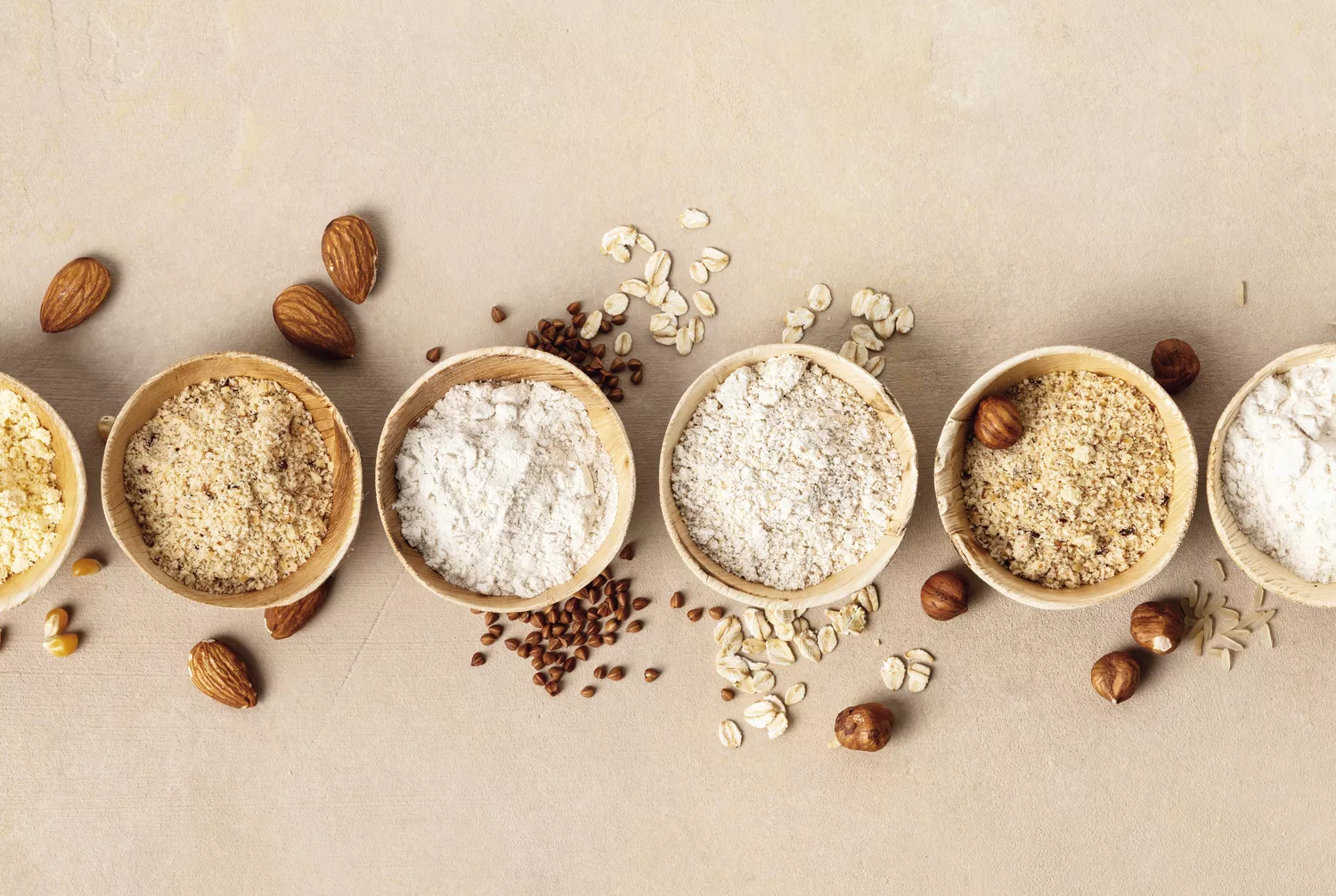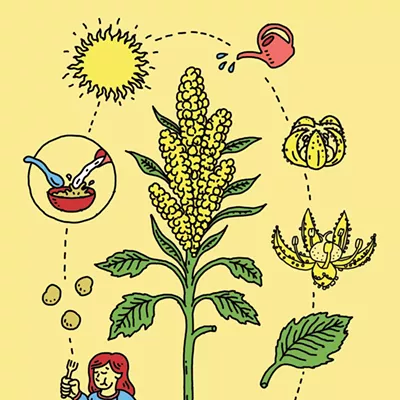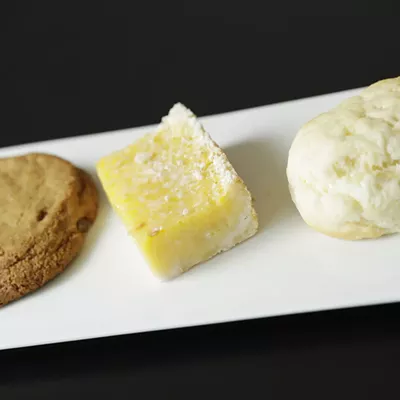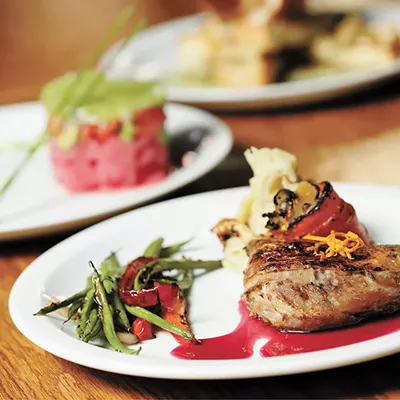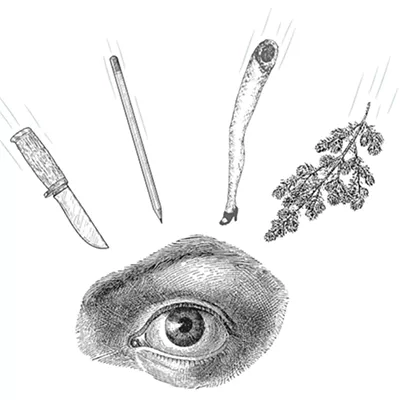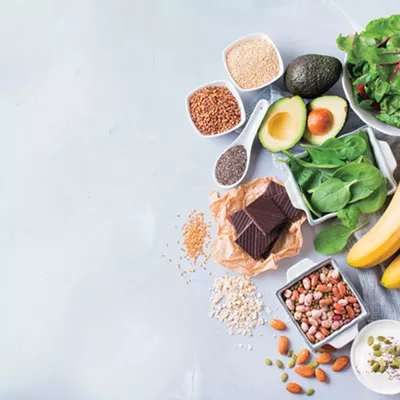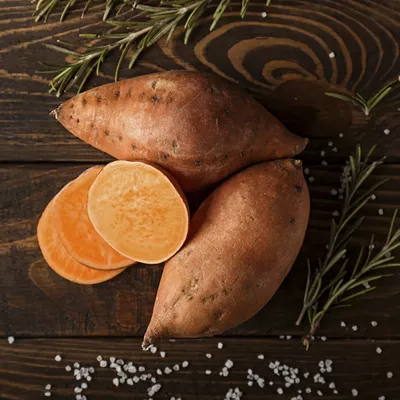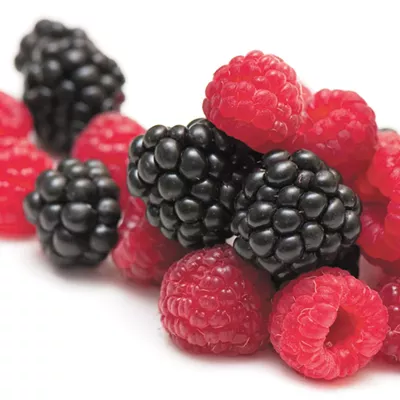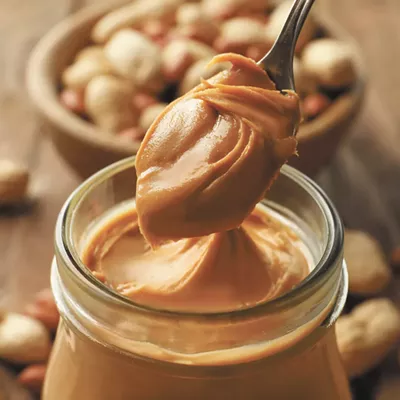When ground into a fine powder, many crops can be made into what we refer to simply as "flour." Flour is made by milling grains, nuts, seeds or legumes. Although wheat flour may be the most common flour in our country, it may not always be the best choice. Whether you want to experiment to diversify your diet or are avoiding wheat due to gluten content, take comfort in the fact that you will be able to find a nutritious flour to suit your needs.
Gluten-containing Flours
The commonly found gluten-containing flours are WHEAT, BARLEY and RYE. All three are common staples in America, used in a variety of breads and baked goods. But first, what actually is gluten? Gluten is a protein found in these grains that helps to maintain shape and elasticity. People with Celiac disease, an inherited autoimmune disorder, are unable to break down this protein, causing severe digestive issues and discomfort. An estimated 1 percent of the U.S. population have Celiac disease. While the rest of us are able to digest this protein, some choose to avoid gluten-containing grains for other reasons, including sensitivities and allergies.
If you are able to enjoy these grains, you're in luck: They're packed with nutrition! Wheat, barley and rye all belong to the grasses family. Whole wheat beats the others in iron and protein content. All are very high in B vitamins; wheat and rye especially are packed with thiamin (B1) and niacin (B3). As a whole grain, all three are high in fiber, though barley has the highest. These grains are all high in minerals too, particularly manganese and copper.
Gluten-free Flours
There are many types of gluten-free flours, often used for different purposes. There are GLUTEN-FREE FLOUR MIXES that are designed to replace all-purpose flour in your favorite recipes. However, be aware that these are often more processed, containing starches and gums in addition to gluten-free grains. If reducing processed components is important to you, try experimenting with creating your own gluten-free all-purpose flour! Although gluten-free flours are often used to substitute for glutinous grains like wheat, remember to follow a recipe specific to that flour when first using it, since each flour has unique quirks and characteristics when cooked.
Gluten-free ancient grains such as AMARANTH, QUINOA, MILLETS and TEFF have been used across the world for centuries, before crops were heavily modified to support large-scale farming. These grains all make great wheat alternatives and are highly nutritious, rich in minerals and fiber. Quinoa and Amaranth have been grown in South America and Mexico dating back thousands of years and are used in many traditional recipes from various countries. Teff is also an ancient grain, with usage dating back to 1,000-4,000 BCE in Ethiopia. Finally, there are many types of millets commonly used all over the world, though most is used in Asia. Millet also dates back more than 4,000 years.
Some other common gluten-free whole food flours include ALMOND, OAT and CHICKPEA. Each of these flours is as nutritious as their whole food sources, but they cook quite differently and are often used in different types of recipes than wheat.
Almond flour adds a lovely richness to breads or baked goods, though might not be the most cost-effective gluten-free flour to use on a daily basis. It also doesn't hold together well on its own, often needing the help of egg or other protein-rich ingredients to hold the dough together.
Although commonly used as a rolled grain, oats can also be processed into oat flour – which is rich in nutrients and fiber. Oats tend to absorb a lot of liquid and hold a more jelly-like consistency if kept moist. This can be great for holding texture for gluten-free breads, cookies, muffins and pancakes, but can give an undesirable texture if too much moisture is used. Although oats are naturally gluten-free, if avoiding gluten for medical reasons be sure to check for a gluten-free certification, as oats are often processed on the same equipment as other gluten-containing grains.
As a ground legume, chickpea flour is rich in both protein and iron. Chickpea flour is often used in savory recipes, such as egg-free omelets or flatbreads (like a crispy French socca), but can also be used to make sweets like banana bread. However, chickpea flour tends to be more dense and difficult to create fluffy textures. Though, unlike some other gluten-free flours, chickpeas bind well together with their high protein content, helping to replace gluten when needed.
No matter what milled food you choose to use as flour in your next recipe, rest assured that the unrefined (whole) flour will serve as a highly nutritious base – glutenous or not. Experimenting with new flours is a great way to add some variety to your everyday diet!
Stacey Aggarwal received a Ph.D. in pharmacology from the University of Washington. She writes about biology, health and nutrition while running a lavender farm in North Idaho.

